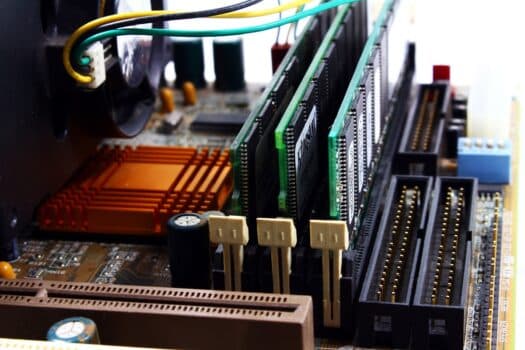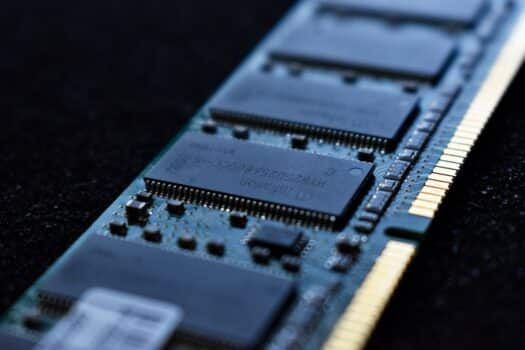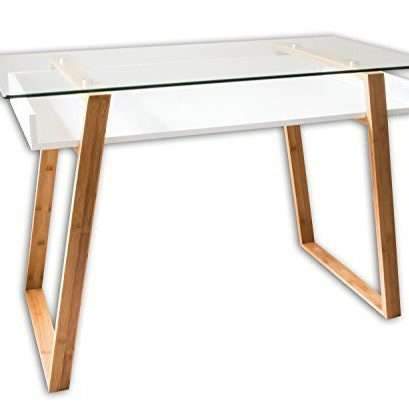
Disclaimer | This article may contain affiliate links, this means that at no cost to you, we may receive a small commission for qualifying purchases.
For any type of architectural or engineering task, a laptop with decent RAM is essential. That is why the best laptop for architects comes with sufficiently high RAMs.
However, systems with high RAMs are pretty expensive. And for those who do not have a proper source of income, such as architecture students or freshers, making such a big investment can be risky.
Besides, not all architecture jobs require a ton of RAM. In smaller projects, you can get the job done with a lower RAM as well. But, you shouldn’t go too low either, as that can be counterproductive.
This raises the question – how much RAM does an architect really need? Usually, we would suggest a RAM of 16 gigabytes (GB). But, there are some other considerations to keep in mind before you make a purchase.
That is what we have discussed in this brief guide. So, if you are a budding architect, dive in!
How Much RAM Is Suitable For Architecture Projects?

Random Access Memory, popularly shortened to RAM, works in conjunction with other computer systems. And, the more RAM you have, the faster your computer will be. A higher RAM can be beneficial for multitasking too, as you can safely run a bunch of programs without pushing your system’s resources to the limits.
All the different operating systems used today generally require at least 4GB of RAM to function. If you use anything less than that, your computer might become slow or not work at all. Apart from that, it is wise to have some extra RAM to run the additional programs and software. This is why most modern systems come with 8GB or 16GB RAM.
You should keep in mind that different types of tasks require different memory capacities. Now, architecture and engineering projects need to run a lot of complex designing and rendering applications, which use a lot of the system’s resources.
Therefore, an architect’s laptop should have 16GB of RAM, which provides enough memory capacity for multitasking or running resource-intensive processes. For architecture graduate students, this can be shrunk down to 8GB, but no less than that. This is due to the fact that the load is a lot less for students compared to working professionals.
In that context, you can expand your RAM capacity later on if required. Modern laptops and computers come with spare RAM slots just for this purpose. For Instance, if you buy a system with 16GB RAM capacity, you can upgrade it with another 16GB of RAM to get a total of 32GB. However, such upgrades are optional, and it comes down to personal preference and workload.
What Other Components Do You Need To Consider?
Architectural work is a lot similar to web designing or software development. You need to do tasks that require a lot of processing power or are graphically intensive. Thus, you need to consider some other components, such as the processor, storage drive, graphics card, and so on.
On that note, the best laptops for web designers and developers can meet the requirements of architects as well. These laptops can handle any complex coding tasks with relative ease. They can also handle any type of advanced rendering system, which is usually commonplace in architectural design.
That is why in the following sections, we have discussed some of the most critical components of an architecture laptop.
1. Central Processing Unit (CPU)
This is probably the most important component for laptops used by architects. The CPU, commonly known as the processor, helps with most of the complex computing tasks.
A powerful laptop should have an equally powerful processor. That will allow you to run complex architecture programs quickly. It will also ensure that your system does not freeze or crash when you are running multiple applications.
We recommend getting the latest-generation, high-performance CPUs, such as the Intel Core i7 or AMD Ryzen 7. If you are on a tight budget, you can go with the Intel Core i5 or AMD Ryzen 5 chips, but their performance is a bit lower than the former choices. Ryzen 5 or Core i5 for architecture students on a tight budget is a better choice.
2. Graphics Processing Unit (GPU)
A professional architect or an architecture student needs to run several graphics-intensive design software, such as AutoCAD, or even rendering software, such as 3ds Max. Such programs require a lot of graphical processing power, which is where the GPU comes in.
Commonly known as a graphics card or video card, the GPU has a memory capacity of its own. In order to seamlessly run any type of designing and rendering software, we suggest using a graphics card that has a memory of at least 2GB.
Typically, the graphics cards under the Nvidia GeForce GTX series have a memory of 2GB or more. You can also consider the latest GeForce RTX range of cards, which have additional ray tracing capabilities, but are quite expensive. So, if you are on a tight budget, you can settle for the GTX series, which can get any architectural job done just fine.
3. Storage Device
The storage device is another critical component for architects. Normally, an architect needs to store large blueprints and design files, so the more storage capacity they have, the better. You can fulfill this requirement with a hard disk drive (HDD), which has a high storage capacity.
On the flip side, HDDs are rather slow, so accessing files or running programs using them can be time-consuming. This problem can be resolved if you get a solid-state drive, which is considerably faster than a conventional hard drive. However, for the same storage capacity, an SSD will cost you a lot more than an HDD.
For practicality, we recommend getting a hybrid drive consisting of both an SSD and HDD. You can use a high-capacity hard drive for storage, while the operating system and other software can be run from a lower-capacity SSD.
4. Screen
If you ask any architect, they will tell you how important a large screen with high resolution is for running architectural programs. With that, you can decipher the smallest details without straining your eyes.
Typically, architects use laptops with screen sizes of 15 and 17 inches with a resolution of 1920×1080 pixels, commonly known as 1080p Full HD resolution. If you are willing to spend some more, you can get a larger screen that can be attached externally with an HDMI cable.
Apart from the size, the refresh rate of the screen matters for architects. With a higher refresh rate, the movements on the screen are smoother and more precise. But, on the other hand, high refresh rate screens are expensive.
In this regard, some of the most common refresh rates used by architects are 60Hz, 120Hz, or 144Hz. If you are a professional, you can go with the higher refresh rates, but for architecture students, screens with 60Hz refresh rates are sufficient.
What Software Is Necessary For Architects?
The above section deals with the necessary hardware requirements for architectural computing systems. But, as an architect, you need to have the bare minimum software as well. Primarily, there are two main categories of software you need to consider, both of which have been discussed below.
1. Operating System
There are three major operating systems available today – Microsoft Windows, Mac OS, and Linux. Among the three, Linux offers the most versatility and freedom, which is why it is the top choice for developers and web designers. It can be used by architects too, but a lot of architectural software is not supported in this system.
That is why architects mostly use Windows, as it can run all of the programs necessary for architectural projects. You can also use apple products, such as the MacBook Pro, which runs on Mac OS. It is a very polished system, but it lacks many of the functionalities found on a typical windows laptop.
Therefore, we recommend running two operating systems using dual boot. Both Windows and Mac OS support dual booting, which makes it highly convenient for architects. That way, you get the diverse functionalities of Windows and the streamlined performance of Mac OS.
2. Architecture Software
An architect requires a wide range of designing and rendering software, as we have already stated before. These include CAD software, such as AutoCAD, modeling programs like Rhino 3D and 3ds Max, and information modeling systems like Revit.
Most of them need to be purchased separately, so it can be an expensive affair for architecture students. However, in many cases, the institution may provide such software to its students. If that’s not the case, you can always go for some of the free software available for architects, albeit with limited functionalities.

How Much RAM Does An Architect Need Frequently Asked Questions ?
Do architects use Mac or PC?
A majority of architects use a PC since it is cheaper and more flexible to use than a Mac. Although, there are some professional architects who prefer to use a Mac because of its premium features and streamlined operation. However, you can use both in a single device with dual booting, as we have discussed before. So, Mac or PC for architects, or both?
Can you use a desktop computer for architectural studies or work?
Yes, you can use a desktop computer in the architecture field. It is cheaper than a laptop, which makes it a great choice for students. But, it is not portable like a laptop, which is a major inconvenience. As most architects prefer portability, laptops are more common than computers.
What are some other required software for an architect’s laptop?
There are some supplementary software that you need on your system. One among them is Notepad or Microsoft Word, which you can use for taking notes. You should also have Adobe Acrobat Pro for creating and editing portable document format (PDF) files, which is a common file format used for books and documents. Additionally, you should have software for video editing and making presentations.
Can you watch movies or play games on an architect’s laptop?
A laptop used by an architect is a pretty powerful computer. So, you can safely use it for watching movies, playing games, or any other leisure activities.

How Much RAM Does An Architect Need Final Words
That brings us to the end of this brief yet informative article. We have covered not only the RAM but also other hardware and software requirements for both a professional and student architect.
Before we conclude, we would like to sum it up for you once more. The optimal configuration should comprise 16GB RAM, Intel Core i7 or AMD Ryzen 7 processor, hybrid storage, a 17-inch screen of 1080p resolution, 120Hz refresh rate, and Windows OS.
If you are a student, you can opt for lower specifications. But, if you are a professional, you can go with the above configuration or even higher, based on your preferences. Also, do not forget to get the necessary software installed on your system.
With that said, it’s time for us to wrap up. See you later, folks!



